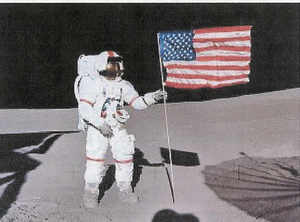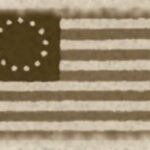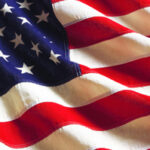There are few symbols as ubiquitous or as familiar to us as our national flag. But how much do you really know about “Old Glory?” Bring this fun flag test along with your picnic basket to your next summer holiday celebration. Test your family and friends on flag trivia this Memorial Day, Flag Day and Fourth of July.
1. From your memory, and without peeking, how many stripes on the American flag are red?
A. Six.
B. Seven.
C. Eight.
D. Nine.
2. Who designed the American flag?
A. George Washington.
B. Betsy Ross.
C. Francis Hopkinson.
D. Francis Scott Key.
3. Where can you find the original Star Spangled Banner today?
A. On display in the Capitol Rotunda.
B. In Donald Trump’s private collection.
C. At the Republican National Committee Headquarters.
D. At the Smithsonian Institute.
4. Which of the following days has not been declared by Congress, official proclamation or custom to be a flag flying day?
A. Easter Day.
B. Mother’s Day.
C. Father’s Day.
D. Christmas Day.
5. When are new stars added to the flag?
A. On the Fourth of July following the admission of new states to the Union.
B. On the First of January following the admission of new states to the Union.
C. Upon order of the Supreme Court.
D. Upon order of Congress.
6. When did Americans begin pledging allegiance to the flag?
A. 1954.
B. 1942.
C. 1812.
D. 1776.
7. What characteristics do the three colors of the flag officially represent?
A. Red stands for bravery, white means liberty and blue represents vigilance.
B. Red stands for sacrifice, white means truth and blue represents justice.
C. They are the three colors derived from the British Union Jack for Colonial America.
D. None of the above.
8. Who has the authority to order American flags to be flown at half-staff?
A. Congress and the Supreme Court.
B. The president and state governors.
C. Mayors and city councils.
D. The Department of Homeland Security and the Department of Defense.
9. How many American flags are on the moon?
A. One.
B. Three.
C. Six.
D. Twelve.
10. What should you do if your flag touches the ground?
A. Clean it.
B. Destroy it.
C. Store it away.
D. Return it to the manufacturer.
Answers:
1. B – Seven.
2. C – Francis Hopkinson was a member of the Continental Navy Board and a signatory of the Declaration of Independence representing New Jersey. Interestingly, Hopkinson never recovered his out-of-pocket expenses for designing the flag. Congress repeatedly questioned his record keeping and receipts until Hopkinson gave up asking for reimbursement. The price he placed on his services? A quarter cask of the public wine.
3. D – The Smithsonian Institute in Washington, D.C. houses the original flag which flew over Fort McHenry near Baltimore during the War of 1812 and which served as the inspiration for the 1814 Francis Scott Key poem and eventual national anthem.
4. C – Father’s Day.
5. A – When a new state is admitted to the Union, the star representing that state is added to the flag on the Fourth of July following the admission date.
6. B – Congress officially recognized the Pledge of Allegiance on June 22, 1942. The version we know today was created by an act of Congress in 1954 which added the words “under God.”
7. D – The meaning of red, white and blue has never been officially defined or recognized, although the colors have been attributed with many metaphorical characteristics in popular poems, speeches and lyrics.
8. B – The president and state governors.
9. C – Six moon crews have planted U.S. flags on the moon. The missions were Apollo 11 in July 1969, Apollo 12 in October 1969, Apollo 14 in January 1971, Apollo 15 in July 1971, Apollo 16 in April 1972 and Apollo 17 in December 1972.
10. A – You should make every effort to ensure that your flag never meets the ground, but if it does, correct the situation. If the flag is noticeably dirty, clean it by hand and dry it well before flying it again.









